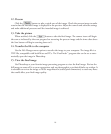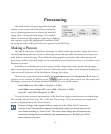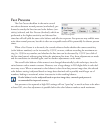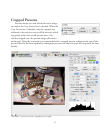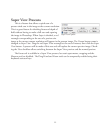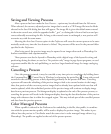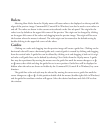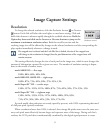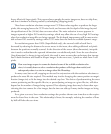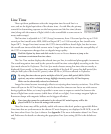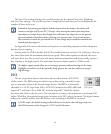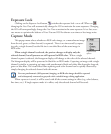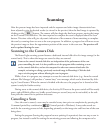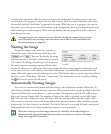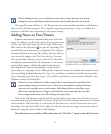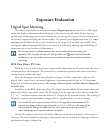
26
fewer, effectively larger pixels. is process always samples the entire image area, does not skip lines,
and thus is immune to aliasing caused by subsampling (skipping pixels).
ese lower resolution selections average more CCD data values together to produce the larger
pixels; this averaging lowers the CCD noise levels, and increases the bit depth of the image beyond
the specifications of the (14-bit) data converters alone. e noise reduction is more apparent in
images captured at higher ISO sensitivity settings, which may allow the use of very high ISO settings
when low-resolution image files are being captured. e bit depth improvement will be most notice
-
able at lower ISO sensitivity settings, where CCD noise does not limit the available dynamic range.
For resolutions greater than 100% (SuperModels only), the scanned width of each line is
decreased by reducing the distance the sensor moves in the insert, thus adding additional real pixels
between the positions normally scanned. In the direction of the sensor (short dimension), interpola
-
tion is used to redistribute the captured information over additional pixels. Since the scan direction
(long dimension) is always giving real pixels, the result is more accurate than techniques that interpo
-
late in both directions and results in sharper images. In the worst case, 3 pixels are made from 2 real
pixels.
If an exact image output size cannot be obtained at one of the available resolution selec-
tions, it is usually better to select a resolution that produces a file larger than needed, and
subsequently reduce it to size in an image editor like Photoshop.
In many cases, but not all, cropping can be used in conjunction with the resolution selections to
produce the exact file size required. is method may involve changing the camera position or magni
-
fication (image size) to fit the image into the desired crop box. e choice of predetermining the exact
camera positioning and the specific file size, or post-adjusting an image to a given file size, will often
depend on the number of images being captured. Post-adjusting image data may be faster than repo
-
sitioning the view camera for a few images, but the time can add up if many similar images are being
produced.
For a given scan area, lower resolution settings also produce shorter scan times due to the require
-
ment for fewer lines in the scan. is relationship is linear; for example, reducing the number of lines
by half will halve the scan time.



